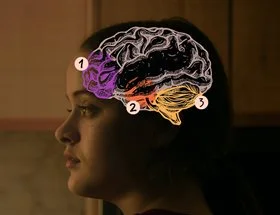
For Leavers
Information to help teenagers planning their Leavers week, including facts about alcohol, and tips to stay safe.
Young people are particularly vulnerable to harm from alcohol because their brains and bodies are still developing. The brain goes through important changes during puberty, and continues to develop until around age 25,1 making it more sensitive to damage from alcohol.
Alcohol affects a young person’s brain differently to the adult brain. Exposure to alcohol while the brain is still developing can lead to long-term emotional problems and difficulty with learning, planning and memory.
This can ultimately limit a young person’s ability to reach their full potential, including at school, study, or work. Some areas are particularly sensitive to the effects of alcohol.3
The Australian Alcohol Guidelines recommend that children and people under 18 should not drink alcohol to reduce the risk of injury and other harms to health.

Alcohol use, especially at a young age, increases the risk of experiencing mental health issues, including depression and anxiety.7 For people who experience mental health issues, drinking alcohol can make symptoms worse.
Alcohol can also interact with over the counter and prescription medication, including anti-depressants.
Young people who start drinking alcohol at an early age are more likely to have problems with alcohol later in life, such as binge drinking and becoming dependent on alcohol.7,8
The later teens delay their first alcoholic drink, the less likely they will drink alcohol regularly9 and the less likely they will experience issues with alcohol as an adult.10 Even in adulthood, regularly drinking alcohol (even at low levels) causes damage to the body and can lead to serious diseases, including cancer and stroke.

Young people are still developing skills to make good decisions and their brains do not assess risks in the same way that adult brains do.
Adding alcohol to the mix can further increase behaviours that can end in harm7,8 like:
Arain M, Haque M, Johal L, et al. Maturation of the adolescent brain. 2013. Neuropsychiatr Dis Treat. 9:449-461. doi:10.2147/NDT.S39776
National Health and Medical Research Council. Australian Guidelines to Reduce Health Risks from Drinking Alcohol. 2020. Available from: https://www.nhmrc.gov.au/about-us/publications/australian-guidelines-reduce-health-risks-drinking-alcohol
Seemiller LR, Gould TJ. The effects of adolescent alcohol exposure on learning and related neurobiology in humans and rodents. 2020. Neurobiol Learn Mem. 172:107234. doi:10.1016/j.nlm.2020.107234
Squeglia LM, Jacobus J, Tapert SF. The effect of alcohol use on human adolescent brain structures and systems. 2014. Handb Clin Neurol. ;125:501-510. doi:10.1016/B978-0-444-62619-6.00028-8
Meda SA, Hawkins KA, Dager AD, et al. Longitudinal Effects of Alcohol Consumption on the Hippocampus and Parahippocampus in College Students. 2018. Biol Psychiatry Cogn Neurosci Neuroimaging. ;3(7):610-617. doi:10.1016/j.bpsc.2018.02.006
Marino, E.N., Fromme, K. Early Onset Drinking Predicts Greater Level But Not Growth of Alcohol-Induced Blackouts Beyond the Effect of Binge Drinking During Emerging Adulthood. 2016. Alcohol Clin Exp Res, 40: 599-605. https://doi.org/10.1111/acer.12981
Mattick, R., Clare, P., Aiken, A., Wadolowski, M., Hutchinson, D., & Najman, J. et al. Association of parental supply of alcohol with adolescent drinking, alcohol-related harms, and alcohol use disorder symptoms: a prospective cohort study. 2018. The Lancet Public Health, 3(2), e64-e71. doi: 10.1016/s2468-2667(17)30240-2
Bonomo, Y.A., Bowes, G., Coffey, C., Carlin, J.B. and Patton, G.C. Teenage drinking and the onset of alcohol dependence: a cohort study over seven years. 2004. Addiction, 99: 1520-1528. https://doi.org/10.1111/j.1360-0443.2004.00846.x
Livingston, M, Callinan, S, Vashishtha, R, Yuen, WS, Dietze, P. Tracking the decline in Australian adolescent drinking into adulthood. 2022. Addiction. 117: 1273– 1281. https://doi.org/10.1111/add.15720
McCambridge J, McAlaney J, Rowe R. Adult consequences of late adolescent alcohol consumption: a systematic review of cohort studies. 2011. PLoS Med. 8;8(2):e1000413. doi: 10.1371/journal.pmed.1000413. PMID: 21346802; PMCID: PMC3035611.
Page last updated20 May 2024